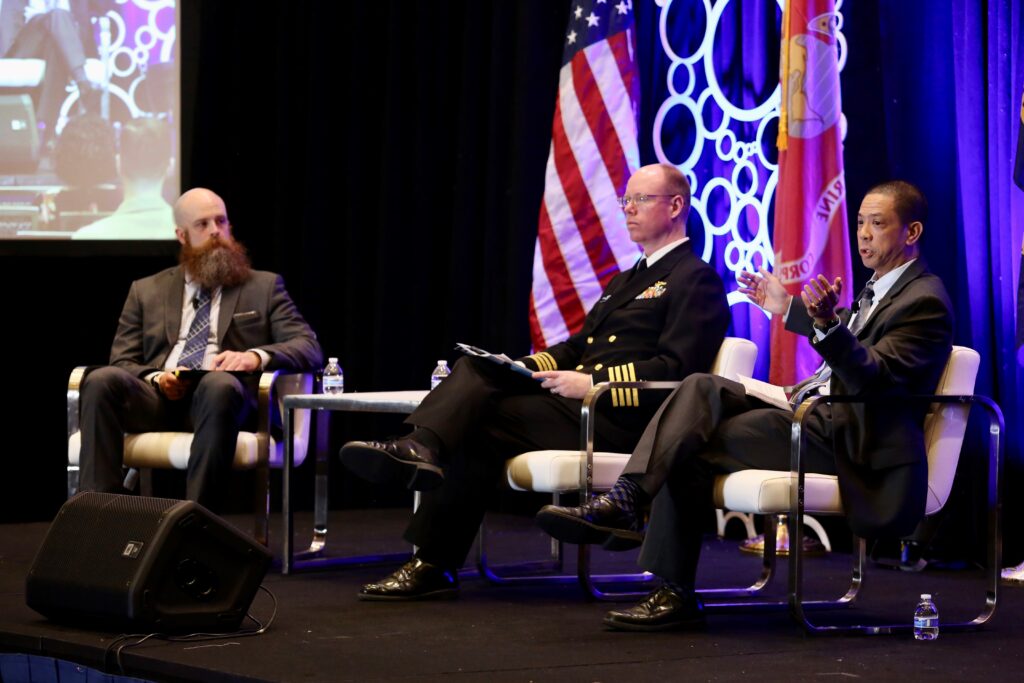
NATIONAL HARBOR, Md. — In order to push future advancements in the area of electronic warfare, industry must find a way to open their interfaces to software developers, a Leidos program manager said during a panel discussion on electronic warfare at the Navy League’s annual Sea-Air-Space symposium here on Tuesday.
One of the key challenges in the EW realm is trying to work out problems with software before sending it back to the vendor, said Ran Hidalgo, a program manager for Leidos, who said he sees this issue in his own experiences with flight.
“A number of times, there were problems I had never seen until I’m actually in flight,” Hidalgo said. “I’m finding that software starts to reset for no reason. Why is that? Well, we’ve got to figure that out.”
The next step is to take it back to the vendor, but that slows down development, he said.
“You’re trying to minimize those situations where you have to kick things back to the vendor in order to actually resolve [the issue],” he said.
Hidalgo said that a lot of the future innovation with EW systems won’t happen with vendors who are building those systems today, but rather with software companies down the road. He pointed to the iPhone and how it revolutionized technology, but noted that it wasn’t the iPhone itself that has had the impact but the apps it hosts.
“I think about EW in this same manner when it comes to this technology,” he said. “Allowing third-party developers open access to existing systems and future systems is really changing the game in terms of how EW systems can be handled.”
However, bigger vendors are often resistant to this movement, and that is why industry and the government need to rethink things to an extent, Hidalgo argued.
“That is a challenge, because a lot of OEMs [original equipment manufacturers] and the big vendors that build EW systems today don’t necessarily like to expose their interfaces,” he said. “We get it, it’s a business, but I think there needs to be some sort of concerted effort between the services, the government and industry to allow other players to play.”
- NAVSEA Office Seeks to More Rapidly Modernize Ship Technology Through Common Hardware: Official - April 7, 2022
- Official: Dahlgren Recently Tested ‘Hypercone’ Hypersonic Test Projectile - April 6, 2022
- Leidos PM: Big Vendors Must Do More to Open Electronic Warfare Interfaces to Developers - April 6, 2022




